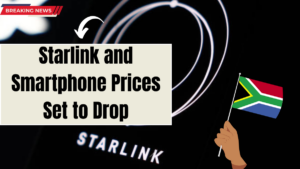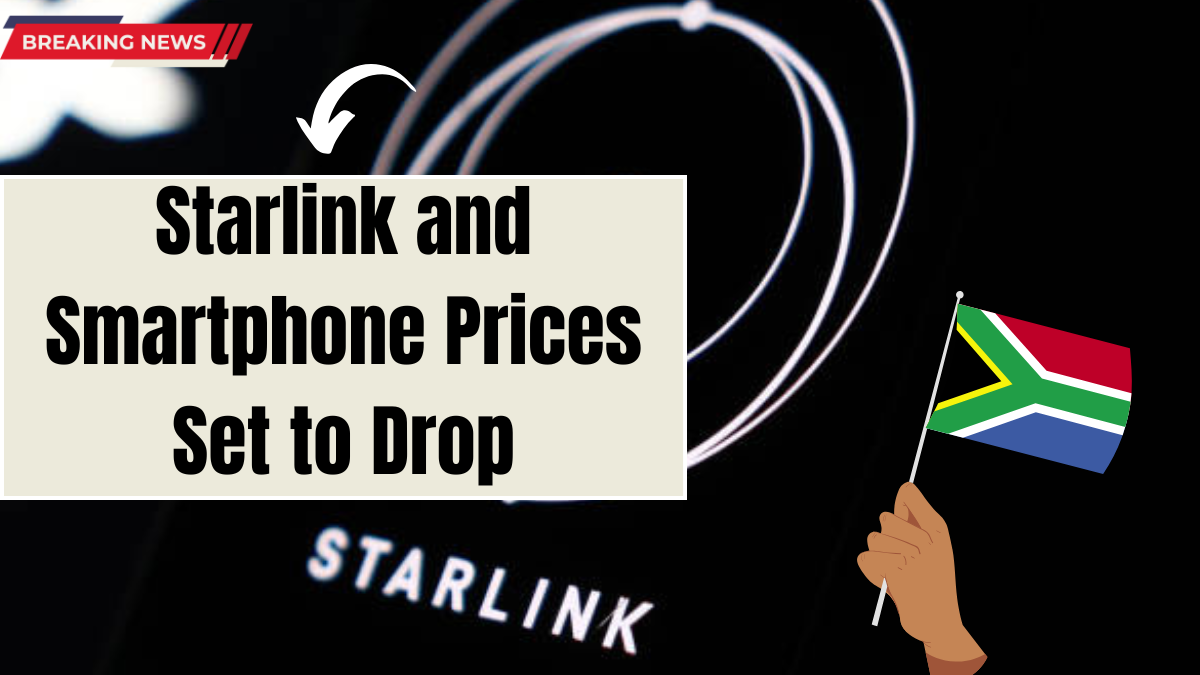South Africa’s digital landscape may be on the brink of major transformation, as the country’s Minister of Communications and Digital Technologies, Solly Malatsi, announced a comprehensive two-phase strategy aimed at expanding internet access and slashing smartphone costs.
In a recent opinion piece published in the Sunday Times, Malatsi detailed how this approach could not only bridge South Africa’s digital divide but also encourage international players such as SpaceX’s Starlink to officially enter the market.

Opening the Market to Global Internet Providers
Malatsi’s first priority is to make broadband more accessible by clearing regulatory hurdles for businesses — local and international — to offer affordable internet across the country. A key element of this move involves issuing a policy directive on equity equivalence programmes (EEPs) in the ICT sector.
EEP initiatives allow multinational corporations to contribute to economic empowerment through alternative methods rather than local ownership. This includes funding projects such as:
-
School and clinic connectivity
-
Digital skills training for youth
-
Small business tech enablement
According to Malatsi, this change would allow more flexibility under South Africa’s empowerment rules and ultimately pave the way for Starlink’s satellite internet rollout, which has been stalled due to local ownership requirements introduced by the Independent Communications Authority of South Africa (Icasa) in 2021.
Although these 30% black ownership regulations were suspended, they have left prospective entrants like Starlink in a legal grey area.
Malatsi emphasized that enabling EEPs is now part of the government’s Medium-Term Development Plan, and he hopes Icasa will act swiftly.
Starlink’s Entry Could Lower Internet Costs
The minister’s spokesperson, Kwena Moloto, referenced Starlink directly, saying that opening the market to the global satellite provider would boost competition, improve service quality, and lower data prices across the board.
Thousands of South Africans have already accessed Starlink through its roaming service, but it’s still not officially licensed within the country.
Making Smartphones More Affordable
The second phase of Malatsi’s plan addresses a significant barrier to connectivity — the high cost of smartphones.
To ensure that citizens can actually access and benefit from high-speed broadband, the minister has teamed up with the World Bank and the Global System for Mobile Communications Association (GSMA) to conduct a comprehensive study into lowering the cost of smart devices in South Africa.
While the study is still in progress, Malatsi has already achieved a major victory.
In the 2025 Budget Speech, Finance Minister Enoch Godongwana announced that smartphones priced under R2,500 will no longer be subject to the 9% luxury goods tax (ad valorem), starting 1 April 2025.
This tax used to treat affordable smart devices as luxury items — despite being essential tools for communication, education, and accessing digital services.
Malatsi said that declassifying smartphones as luxury products has been a personal priority since he took office.
The Road Ahead: Expanding Access and Lowering Costs
Together, these two policy pillars — regulatory reform for broadband providers and reduced costs for smart devices — could significantly accelerate digital inclusion in South Africa.
If implemented successfully, the plan could:
-
Help Starlink officially launch in SA
-
Reduce data costs through competition
-
Make smartphones more affordable for low-income citizens
-
Expand high-speed connectivity to schools, clinics, and remote areas
Malatsi said he intends to ensure the outcomes of this digital strategy create both economic opportunities and social impact, especially for historically underserved communities.
FAQs
What are Equity Equivalence Programmes (EEPs) and how do they benefit South Africa?
EEPs allow multinational tech companies to contribute to local economic empowerment through education, skills training, and digital infrastructure instead of traditional ownership requirements.
Why hasn’t Starlink officially launched in South Africa yet?
Starlink has faced regulatory hurdles due to local ownership laws requiring 30% black ownership for national telecom operators. These requirements are under review.
How will smartphone prices be reduced in South Africa?
Starting 1 April 2025, the 9% luxury tax on smartphones priced under R2,500 will be removed. Additional policy changes may further reduce costs in the future.
What other measures are planned to improve digital access?
The government is working with the World Bank and GSMA on a study to reduce device costs and promote broadband access in underserved areas.
Will more internet providers like Starlink be allowed into the South African market?
Yes, if EEP policies are implemented, it could open the door for more international players to operate in South Africa and increase market competition.
Click here to know more.
Aanchal is a passionate writer with a keen interest in storytelling, content creation, and creative expression. She enjoys exploring diverse topics and crafting engaging narratives that captivate readers.

